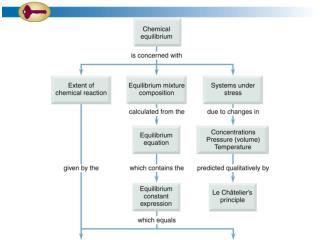Consider the Gasphase Reaction of A2 Molecules Red With B Atoms Blue
![]() Download
Download

Skip this Video
Loading SlideShow in 5 Seconds..
Which of the experiments has resulted in an equilibrium state? What is the value of the equilibrium constant for the rea PowerPoint Presentation
 Download Presentation
Download Presentation

Which of the experiments has resulted in an equilibrium state? What is the value of the equilibrium constant for the rea


Which of the experiments has resulted in an equilibrium state? What is the value of the equilibrium constant for the rea
Download Presentation
Which of the experiments has resulted in an equilibrium state? What is the value of the equilibrium constant for the rea
- - - - - - - - - - - - - - - - - - - - - - - - - - - E N D - - - - - - - - - - - - - - - - - - - - - - - - - - -
Presentation Transcript
-
13.28 Consider the interconversion of A molecules (red spheres) and B molecules (blue spheres) according to the reaction A B. Each of the following series of pictures represents a separate experiment in which time increases from left to right: Which of the experiments has resulted in an equilibrium state? What is the value of the equilibrium constant for the reaction Explain why you can calculate without knowing the volume of the reaction vessel. (a) (b) (c)
-
13.29 The following pictures represent the equilibrium state for three different reactions of the type A2+ X2 2 AX (X=B,C, or D): (a) Which reaction has the largest equilibrium constant? (b) Which reaction has the smallest equilibrium constant?
-
13.30 The reaction A2+ B A + AB has an equilibrium constant Kc= 2. The following pictures represent reaction mixtures that contain A atoms (red), B atoms (blue), and and AB molecules: (a) Which reaction mixture is at equilibrium? For those mixtures that are not at equilibrium, will the reaction go in the forward or reverse direction to reach equilibrium? (b)
-
13.31 The following pictures represent the initial state and the equilibrium state for the reaction of A2 molecules (red) with B atoms (blue) to give AB molecules: (a) Write a balanced chemical equation for the reaction. If the volume of the equilibrium mixture is decreased, will the number of AB molecules increase, decrease, or remain the same? Explain. (b)
-
13.32 Consider the reaction A + B AB. The vessel on the right contains an equilibrium mixture of A molecules (red spheres), B molecules (blue spheres), and AB molecules. If the stopcock is opened and the contents of the two vessels are allowed to mix, will the reaction go in the forward or reverse direction? Explain.
-
13.33 The following pictures represent the composition of the equilibrium mixture for the reaction A + B AB at 300 K and at 400 K: Is the reaction exothermic or endothermic? Explain using Le Châtelier's principle.
-
13.34 The following pictures represent equilibrium mixtures at 325 K and 350 K for a reaction involving A atoms (red), B atoms (blue), and AB molecules: (a) Write a balanced equation for the reaction that occurs on raising the temperature. Is the reaction exothermic or endothermic? Explain using Le Châtelier's principle. If the volume of the container is increased, will the number of A atoms increase, decrease, or remain the same? Explain. (b) (c)
-
13.35 The following picture represents an equilibrium mixture of solid BaCO3, solid BaO, and gaseous CO2 obtained as a result of the endothermic decomposition ofBaCO3: (a) Draw a picture that represents the equilibrium mixture after addition of four more molecules. Draw a picture that represents the equilibrium mixture at a higher temperature. (b)
-
13.36 The following picture represents the composition of the equilibrium mixture for the endothermic reaction A2 2A at 500 K: Draw a picture that represents the equilibrium mixture after each of the following changes: (a) Adding a catalyst (b) Increasing the volume (c) Decreasing the temperature
-
13.37 The following picture represents the equilibrium state for the reaction2AB A2+ B2: Which rate constant is larger, kf or kr? Explain.
Source: https://www.slideserve.com/hafwen/13-28-consider-the-interconversion-of-a-molecules-red-spheres-and-b-molecules-blue-spheres-according-to-the-reaction-a